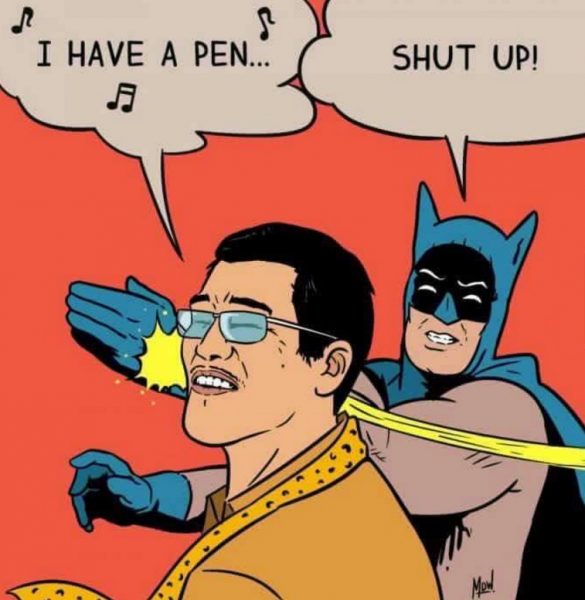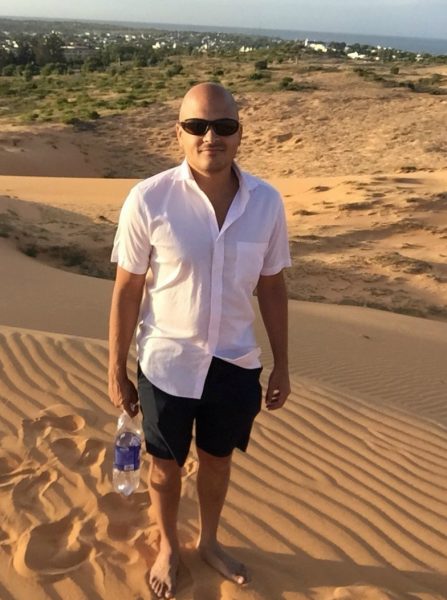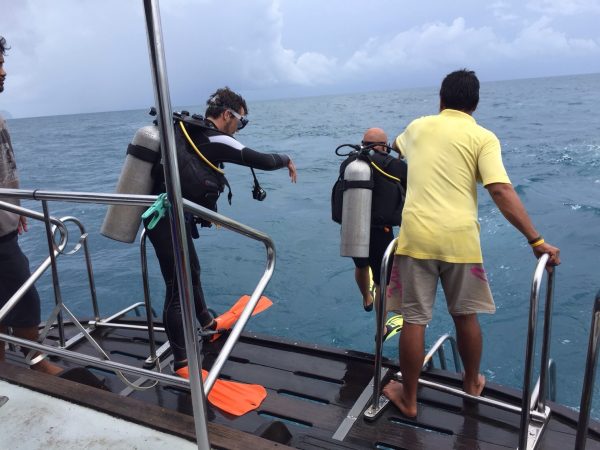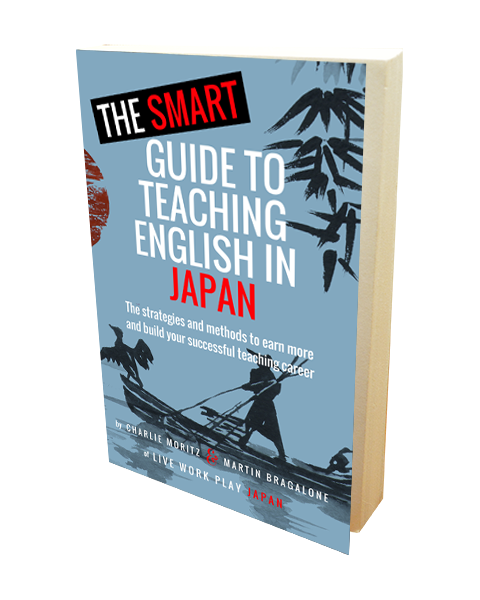Are you looking for the best way to learn Japanese? This is how to learn Japanese FAST using the Techniques of a Japanese Translator and Interpreter
Hi, everyone! It’s Martin. In this post, I will share with you about how I reached Japanese JLPT N1 level and how my language learning has evolved over time. I seek effectiveness with the least amount of effort, so if you want to learn how you can quickly master Japanese and become fluent, keep reading.
If you just want to fast track to my favorite fluency booster for Japanese, click here.
By 2015, I was not really studying Japanese in the traditional sense anymore. I studied Japanese in university. I had great professors and was part of our university’s Japan club. This helped a lot. We basically studied from the Japan Times textbooks starting with Genki I, Genki II and later ‘An Integrated Approach to Intermediate Japanese.’ That last one was ok, but Genki I and II were lacking. That is the nicest way to put it. The grammar is taught in a completely random way. Easy to memorize grammar forms like ~たい meaning more or less ‘to want’ are taught randomly later whereas more complex grammar (and less useful words and phrases) would be taught earlier on.
I also was annoyed by how kanji was taught at the back of the book separately from the “regular lessons.” In my Chinese classes, we only learned words that just happened to be written in kanji. Otherwise, you put kanji on a pedestal and it always seems out of reach. The quicker you start using kanji in daily life, the quicker you will master Japanese. Even It is a miracle I could learn to speak any Japanese using Genki.
Genki Japanese is wrong for 99% of people.
Textbooks like Genki and Minna No Nihongo are designed for large classroom settings with lots of conversation drills and group activities. This is also why Genki moves so slowly. It is designed so that other classmates won’t blast past each other by keeping the content basic. Tofugu wrote a very in-depth review of Genki because it is just so much more engaging than boring textbooks. We just didn’t have many other choices back then, not like you do now. You are in luck if you are learning Japanese in 2017. If you are looking for something better suited to one-on-one private lessons for your italki lessons or a self-study to get through on your own, keep reading.
I continued to study Japanese after coming to work in Japan following my graduation. By this time, I primarily used native content like newspapers, Japanese bunko (small books) and magazines to learn. It was the primary reason I could pass the JLPT. Later, I found myself in a Japanese IT company working as a Japanese to English translator and interpreter.
As a translator, I would rewrite written documents of all kinds in English and then I would reformat them for visually how the English speaking world expects to see them. Documents ranged from Powerpoints on sales presentations to long training manuals on how to manage a new IT facility in China.
As an interpreter, I would actually attend meetings in person between the Japanese and gaikokujin where I would go back and forth between speaking Japanese and English as needed. In short, translators work with written materials and interpreters work with living breathing humans. Generally speaking, few can do the latter, many can do the former. Pay is significantly higher for interpreters across the board, though this can depend on the field. If you are an expert at some really unique patent translation, you can do quite well for yourself as well.
Language Learning Doesn’t Have to Be So Hard. SRS Systems to the Rescue!
As many of us translators do with our spare time, I studied other languages. It’s been a passion of mine for years. I can’t really explain it, but I was always looking for the best or newest way to make learning languages faster and easier. After hours of meetings and staring at a computer screen in my high-rise Tokyo office, I would escape at lunch off to the Sumida Riverbank, whip out my bento and plunge into a language book. Next thing I knew, I felt like I was on le Boulevard Saint Michel à Paris or watching a parade go by at the Красная площадь (Red Square) in Moskva.
Despite how I felt about Genki, don’t get me wrong, I love language books. I just expect them to be good and engrossing just like a regular book. Thus, I never shied away from books and traditional language learning methods. In fact, I know that reading and writing were essential to my learning Japanese and Mandarin as well. I never really used apps. I hardly ever used flash cards either to memorize kanji or phrases.
Believe me, I did try, but they just felt like more of a chore than anything else. I would make huge lists of words to memorize and never get anywhere. That being said, I had a few good runs with the audio program, Pimsleur.
While in Yokohama, I had many Vietnamese neighbors and I had just met a Vietnamese girl. They all only spoke limited Japanese and English. I gave Vietnamese a try. Feeling very confident since I could speak Mandarin.Tiếng Việt is no walk in the park! Every time I tried to speak Vietnamese, my friends made fun of me for speaking with a Chinese accent. While I figured that was better than an Anglo-Saxon accent, it wasn’t the reaction I was looking for. The SRS program, Pimsleur was the only one I found at that time that could get me speaking well enough to be understood and better yet, remember what I was saying!
Pimsleur was a famous American polyglot who developed an SRS (Spaced Repetition Software) designed to stimulate your memory with words and phrases in the right timing to ensure your brain wouldn’t forget them.
How does Spaced Repetition Work?
Essentially, if you hear a new word one time, you will retain it for a short while. The theory goes that there is an average amount of time we all as humans tend to forget any new word we learn. Pimsleur studied what that timing was and would reintroduce it to you just before you would likely have forgotten.
Let’s say the word was “dog” in your target language. You would hear the word and possibly an explanation of how to use it once let’s say in lesson 2. You would hear the word, “dog” repeated throughout lesson 2. Then some more in lessons 3 through 6. The word may only be mentioned a few times in lesson 7 until the intervals became so long, you only heard the word once by lesson 10. As long as you had stuck with the program by this time, the word was yours. You not only could recognize it, you could use it correctly and pronounce it correctly.
As you can see, these intervals are frequent at first and decrease over time. If you’ve ever taught English in Japan, I’m sure you have seen how Japanese teachers repeat phrases to the children over and over again, yet after all this, no one can speak English any the better.
You can yell, “I have a pen” until you are blue in the face, it still won’t help anyone learn to speak English fluently.
To the brains of the children, it may just sound like noise. The brain is very efficient at eliminating unnecessary information. According to this article, “The human brain is loaded daily with 34 GB of information!” No wonder our brains work so hard to erase information. We might go insane if we held on to all that!
We need a way signal to our brains that a particular piece of information like a kanji in Japanese is important enough that it is worth committing to “long-term memory” as opposed to being labeled as temporary use “short-term memory“. Otherwise, the brain just says to itself, this kanji is only worth remembering for the next few minutes or days. We will probably never need it again.
Proper sequence of timing in a context that is interesting to us is the most important thing. Humans need context and we need to pick up patterns, our brains crave it. A well designed SRS program serves this end.
My Pimsleur Review: Not Enough Context And Useful Language. Boring, Repetitive.
Even though Pimsleur was helping me pick up new Vietnamese phrases, the problem with Pimsleur was that after lesson 10 or so, it gets to be about as boring as watching paint dry. Also, I hate when a program has me learning words I could care less about using at the stage I am at in the language. The story for nearly every single Pimsleur is the exact same. I have been through quite a few if you can’t tell (Russian, French, Vietnamese…) and it gets old quick. There is a stage you hit where there are massive diminishing returns, and the time you put into it will just not be worth the results you are getting.
Marco From Podcast #1 also had his first luck speaking Japanese thanks to Pimsleur. Yet after a few weeks, he ran into the same problems. It gets repetitive, boring and the method dries out. I don’t think I could get through more than 30 lessons of it if I tried (and I have many times). Not only this, but the program stays very basic even by edition 2 and 3, you aren’t really advancing into the intermediate stage at all. Hundreds of dollars down the drain and you are still only having very basic conversations. I’m not the only language enthusiast that regrettably had to lay Pimsleur aside.
Pimsleur Pros:
- You do remember what you are learning due to the SRS – this is huge.
- The audio is clear and you will sound decent enough to be understood after even a little study.
Pimsleur Cons:
- It is repetitive (the method itself gets dull)
- The story is boring after a while (businessman goes to X country, blah blah…)
- Much of what you learn isn’t always useful for you at your stage
- The method does not advance you much towards fluency even after hundreds of hours of study
Conclusion: Pimsleur is just ok really. Just don’t go any further than lesson 10 or 20. It can get you started, and getting intonation right is huge. Even if you only learn 20 or 30 words, if you can pronounce them well due to Pimsleur, it was a worthy investment. After a while though, you will need something better, something more in depth to carry on.
If you were about to enroll in an intensive Japanese language program and you only had a few days to prepare then you could do worse than Pimsleur. A few days or a week. After that, save your money for better materials or private lessons.
What About Free SRS Like Anki?
Anki
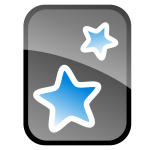 While we are at it, we have to mention Anki and Memrise. Anki is an open source SRS software in particular designed to help you memorize all sorts of information. It is a kind of virtual flashcard deck if you will. Many people upload entire language textbooks to it. Niko from Nihongo Shark and many others swear by it. You are free to try it. I certainly have more times than I can count.
While we are at it, we have to mention Anki and Memrise. Anki is an open source SRS software in particular designed to help you memorize all sorts of information. It is a kind of virtual flashcard deck if you will. Many people upload entire language textbooks to it. Niko from Nihongo Shark and many others swear by it. You are free to try it. I certainly have more times than I can count.
Every time I got into Anki, it became more a chore than anything else. I loved learning French and Thai, I could spend hours dissecting new kanji. I just hated flash cards. I don’t feel at all engaged by them, I retain so little of what I learn and I am bored to death. Go ahead and use Anki if you like. It might work for you.
I hate how hard Anki is to set up. Here is a nice little video Benny Lewis from Fluent in Three Months created. He is an engineer which explains why he was able to get even me to figure out how to use Anki. I gave up after about three weeks though. My hat is off to anyone who has the patience to blast through Anki decks. I would rather learn how to knit a scarf.
Memrise
![]() As for Memrise, I personally like it. It is less of a hassle to set up than Anki. That thing is such a pain in the oshiri to set up…I digress. Memrise has tons of great decks there. just like Anki does. Only difference is there is no “set up.” You can log in with a click of a button using your Facebook or Google login. Maybe the painless setup is why I like Memrise better. Truth be told, they aren’t that different post annoying Anki setup.
As for Memrise, I personally like it. It is less of a hassle to set up than Anki. That thing is such a pain in the oshiri to set up…I digress. Memrise has tons of great decks there. just like Anki does. Only difference is there is no “set up.” You can log in with a click of a button using your Facebook or Google login. Maybe the painless setup is why I like Memrise better. Truth be told, they aren’t that different post annoying Anki setup.
The problem with Japanese Apps?
Will you learn a language from scratch? Fat chance, Steve!
Will you pick up native like intonation? Absolutely not.
It is more of a nice little supplement to your other materials or lessons in your dead time. I can only take so much audio and reading, so it’s alright to take a break every now and then and do some quiet simple study. Sometimes you might be just sitting there waiting for a train or at the doctor’s office. Great time to whip out a Memrise deck. I’m trying to learn the Thai alphabet right now and Memrise is one of my favorite tools. I don’t use it consistently, I just do it when I feel like. Maybe that is why I don’t mind it. It is short, easy and better for me than scanning constant negative political news updates on my Facebook news feed.
Tim Ferris interviewed the founder of Memrise, Ed Cooke. You can listen to it here. Ed is a world master memorizer who holds many records of remembering really odd things like decks of playing cards in ridiculous quantities. No wonder he developed Memrise.
Memrise and Anki are great supplements. They will NOT help you with fluency in verbal Japanese. They MIGHT help you remember some kanji and words. They will never replace reading content, textbooks, audio programs and the like in your target language. They are just a nice-to-have, not a must-have as far as I am concerned.
Isn’t there a Free Japanese Duolingo?
No. In short. There isn’t a Duolingo for English speakers to learn Japanese as of the date of writing this article. There is a Duolingo for Japanese to learn English. I guess you could try that. Sounds about as fun as raking leaves. Even if there was a Duolingo for English speakers to learn Japanese, I would still say, Duolingo is just a nice little supplement to your regular materials. I used to study French and Brazilian Portuguese as I would ride the Hibiya metro line to my office in Nihonbashi using Duolingo. Since I had been speaking Spanish most of my life, Duolingo was probably just right for me to get going with French and Portuguese.
I hate to complain since Duolingo is free. It just gets boring. Also, those robotic voices, no chance in Hokkaido you will ever pick up even near-native like intonation. NEVER. Better to almost put the audio on mute it is so bad. Sure, nice little game to play in between other stuff you do in life, NOT a good course to learn a language. Maybe it’s a decent review or brain exercise at best.
Genki, Mina No Nihongo, Anki, Pimsleur. Learning Japanese shouldn’t be this boring! There has to be a better way I thought….
Finally, I FOUND IT!
The Best SRS System To Date. Period.
Glossika was developed by a guy named, Michael Campbell. Mike also speaks numerous languages like Pimsleur did. Likely more. He is particularly known for his mastery of Mandarin and Chinese dialects like Taiwanese. Mike integrated his own SRS into Glossika called, GSR (Glossika Spaced Repetition). Mike realized that a big problem also with most language products is that we aren’t exposed to nearly enough volume of native audio and language to really become fluent in the language or to really understand enough to even have our first conversations.
Another problem was that words are essentially meaningless in isolation. Without proper context, words literally have no tangible meaning.
“How could that be?” I hear you ask.
Take the word, ‘fat’ for instance. What does it mean? We all have a picture I am sure but that picture changes when other words appear around it.
- He has a fat wad of cash
- The business owners met to cut the fat.
- Jake is fat (pretty straight forward).
- Jake has 40 percent body fat.
- Cut the fat off the bacon (now it is a noun pointing to a specific object)
- Fat chance, Steve!
Imagine learning English and coming across this word in that last sentence. It just wouldn’t make sense to you if you had only used a dictionary to translate the word back to your language. You would be lost. Glossika’s program introduces you to thousands of unique whole sentences in spaced repetition sequences. This way, you only are exposed to words in context, as you would in your native language.
You learn these sentences by hearing their translation and reading it in the ebooks. This takes some patience, but this way you learn the natural patterns of the language. As you learn these, you are picking up the rhythm of the language and intonation.
Choose Your Target Language and Source Language
Before my first trip to Thailand, I listened to Thai on Glossika. You can choose your source and target language by the way. Not that it matters, but I chose Mandarin to learn Thai with. You could choose any language you want like Greek even. I supplemented with a phrase tutorial online for numbers and basic words just to ensure I knew them well.
In Thailand, I was able to tell my taxi driver where I wanted to go, order things at restaurants, and even barter for prices. I wasn’t able to discuss much at all, but that wasn’t my concern. I was able to fluently say what I wanted to say and instead of strange stares and looks, I received what I was asking for! That was everything I could ask for! So far off to a better start than with Vietnamese.
By the time you have done a few months of the new Glossika course, you will already be a very fluent speaker. You may still have a limited vocabulary, but with the words you do know, you will be fluent. Not only fluent in output, but you will more easily recognize native speech. You will be able to pick up new words more easily because you will be able to hear them clearly. You will have trained your brain to listen for Japanese native sounds.
Glossika recently updated their whole system, and you can now get a lot more for your money. Go through the course and take some real time on it, and you will get what I am explaining here in this article. I am not going into the Business Japanese course or other Japanese courses Glossika has now. Maybe I will review those another day. You do not need anything more than this to start upping your Japanese level. This program will last you anywhere between 6 and 10 months, and you need to stick at it every day to get the kind of results you want.
The Glossika Review: Fluency 1, 2 and 3 Course:
GMS- Glossika Mass Sentence
You hear new sentences only; no repetition. I recommend starting with the GMS just to get used to the language and hear as much of the words you will learn as possible. By the end of GMS, you will have heard 3,000 sentences and had been exposed to over 4,000 words! That is well into the intermediate stage of any language.
You hear new sentences, then the translation before going to the next different sentence in spaced repetition mixed in with old sentences. Essentially, the same words are repeated in a sequence. There are a lot of them so it isn’t as easy as it sounds to remember them right away. By end of a few lessons, you will have memorized quite a few of them and they will be stuck in your head.
GSR – Glossika Spaced Repetition
GSR is where you will develop fluency and speed. You have heard these words before in GMS, had time to hear the translations or look them up by now. Now, your memory is challenged to recall these words in their sentence pairs.
As you progress in lessons, words from old sentences are remixed into new blends. You naturally acquire not only the words but also the changes in intonation of the words in new sentence combinations. No need to memorize a list of rules of how to pronounce words. No need to memorize grammar lists. You will figure out a lot of it on your own just by following Glossika.
You should be shadowing at this point (repeating after listening) to build fluency. Aim to match the intonation.
Whatever you do, don’t stress out and re-listen to old lessons just because you missed a few parts. Just keep going day by day or go up to two a day. Mike Cambell often says that if you tried to re-listen to the same lessons just because you missed a few words, it could take you years before you ever finish the program.
It is engineered in such a way that you will have ample chances to re-hear new words and sentences to the point that you simply won’t forget them. It is just a matter of time on target. Every successful language learner knows this. There is no substitute for time on target.
One way to go would be to listen to a few tracks of GMS, then a few of GSR and go like that.
Honestly speaking, don’t overthink it. Just go through the course every day if you can. GMS, GSR, whatever. Just do it. At least hit a new lesson 3 to 5 days a week. The Glossika magic will start to kick in and you will be amazed at what you can say, how fast you can say it and HOW WELL you say it within just a month’s time.
Don’t Stop Halfway Through! Gambatte! Learning Japanese is a Journey, Not a Destination. Keep Climbing The Mountain.
Glossika Japanese will introduce some odd sentences early on that you may wonder if you need at your stage. There is this one sentence that comes up early on about people playing tennis. It’s funny. Those are in fact the sentences you memorize the easiest. With all the sentences variations like “I play tennis with him” and “we were playing tennis,” you can learn a lot about a language’s syntax structure from this one little idea of two people playing tennis.
It will add up. The verbs you learn and nouns, the grammar you learn, it will add up. Partly due to the fact that these sentences get mixed up and re-blended as you go on, it keeps your interest and really gets you to learn these patterns (grammar) in the new language.
Clearly, This Isn’t Your Grandma’s Language Course
When Mike created Glossika, he wasn’t just trying to create another Colloquial or Pimsleur. He certainly aimed higher than Rosetta Stone (the most overrated and underperforming language course on earth). Mike created a system that ensures a new language takes root in your mind. This system is designed to invade your whole mind. Glossika has the power to turn you into a fluent machine able to reproduce your target language with speed, accuracy, and uninhibited cadence.
New learners of a language like Japanese often complain they cannot hear where one word ends and another begins when a native speaker is speaking. Some students of Glossika initially complain that Glossika’s audio is too fast. That is the point; to mimic real native speech. Natives speak fast in every country. It is what it is. The sooner you get used to it, the better for you. Trust the system. By the end of Glossika’s Fluency 1 already, you will be able to easily identify new words in native speech because you will be so used to the nature of the target language’s sentence structure. You will be accustomed to how words actually sound in real sentences.
Glossika Japanese Passionate Online Language Learning Community
Besides all the other bells and whistles of the Glossika Japanese program, the absolute best aspect of Glossika is the passionate online language learning community it has fostered. I have been part of some great language learning forums over the years from Duolingo’s Esperanto Facebook page to the Polyglot conference started by polyglot world superheroes, Richard Simcott and Luca Lampariello.
Glossika’s Facebook community is by far the most active and committed community of language enthusiasts I have ever come across. You can find gems about just about every language you can imagine on that group and long debates about the best practices to learn languages. Mike often chimes in as well.
There are numerous Japanese learners to pair up with there too. This is invaluable. They can share other materials with you and language learning advice.
I also must mention the service. Glossika team members like Sheena Chen and many of the Glossika staff have personally answered all of my requests whether by Facebook or email within a day if not hours. With a program this big and with this many files, things happen. I once lost an entire Glossika course somehow. I lost the link too. One email to Sheen and I had my program back. You’ll never get that kind of service when you are just buying some audio CD online.
*By the way, if you are looking for a dedicated Japanese language learning community, Niko from Nihongo Shark started a huge one last year on Slack. If you enroll in his Nihongo Shark free intro course, he’ll add you to it.
The last few years as I have traveled through Asia, I know I could not have done it without Glossika. I owe Mike and the whole Glossika team a big debt of gratitude. From being able to negotiate my own room contract all in Vietnamese (albeit poor) with my landlord in Saigon to cutting the price on buying some coconut oil for a Christmas present at a mall in Bangkok (speaking Thai), it was Glossika that trained me to be able to do and say what I did, to understand to the depth I did as FLUENTLY as I did. To this day, I still use Glossika to learn new languages and keep up with them. From Russian and Thai to Vietnamese, Glossika is now my go-to resource for becoming fluent in a language.
I know Glossika can do the same for your Japanese as long as you commit to it consistently. If you want to really invest in your Japanese learning and actually get to speaking fluency within the next year, if you want to quickly begin committing real Japanese to memory and speaking fluently, I recommend everyone to:

